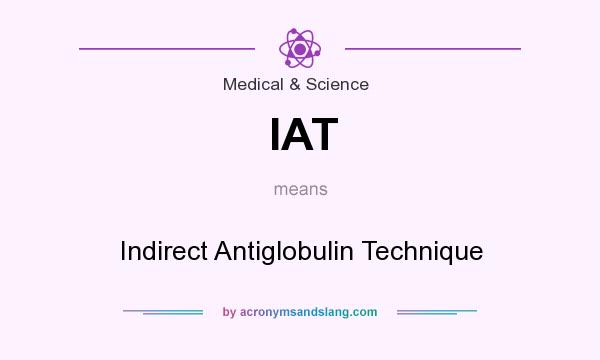What does IAT mean?
IAT means Indirect Antiglobulin Technique
This acronym/slang usually belongs to Medical & Science category.
What is the abbreviation for Indirect Antiglobulin Technique?
Indirect Antiglobulin Technique can be abbreviated as IAT

|
|
Most popular questions people look for before coming to this page
| Q: A: |
What does IAT stand for? IAT stands for "Indirect Antiglobulin Technique". |
| Q: A: |
How to abbreviate "Indirect Antiglobulin Technique"? "Indirect Antiglobulin Technique" can be abbreviated as IAT. |
| Q: A: |
What is the meaning of IAT abbreviation? The meaning of IAT abbreviation is "Indirect Antiglobulin Technique". |
| Q: A: |
What is IAT abbreviation? One of the definitions of IAT is "Indirect Antiglobulin Technique". |
| Q: A: |
What does IAT mean? IAT as abbreviation means "Indirect Antiglobulin Technique". |
| Q: A: |
What is shorthand of Indirect Antiglobulin Technique? The most common shorthand of "Indirect Antiglobulin Technique" is IAT. |
Abbreviations or Slang with similar meaning
- DIIF - Double Indirect Immunofluorescence Technique
- IAT - Indirect Antiglobulin Test
- IARR - Indirect Antiglobulin Rosetting Reaction
- IFAT - Indirect Fluorescent Antibody Technique
- IOMT - Indirect Osteopathic Manipulative Technique
- IRAA - Indirect Radiolabeled Antiglobulin Assay
- CIHA - Cellognost Indirect Haemagglutination technique
- FIAT - fluorescent indirect antiglobulin test
- IAT - indirect antiglobulin tube test
- IAT - isotopic antiglobulin technique
- IIF - indirect immunofluorescence technique
- IIBT - Individual Indirect Bonding Technique
- IIT - indirect conventional immunofluorescent technique
- IIT - indirect immunofluorescence technique
- LIPAT - low-ionic Polybrene indirect antiglobulin tests
- LISS-IAT - low-ionic-strength saline solution and indirect antiglobulin test
- SIAT - saline indirect antiglobulin test
- ACA - antiglobulin consumption assay
- iagt - indirect antiglobulin test
- TAPES - Technique And Practice (or Pressure) Equals Skill. Technique alone is not enough. Application of a new technique in a practice or pressure situation is required to turn the technique into a skill and then improve it.